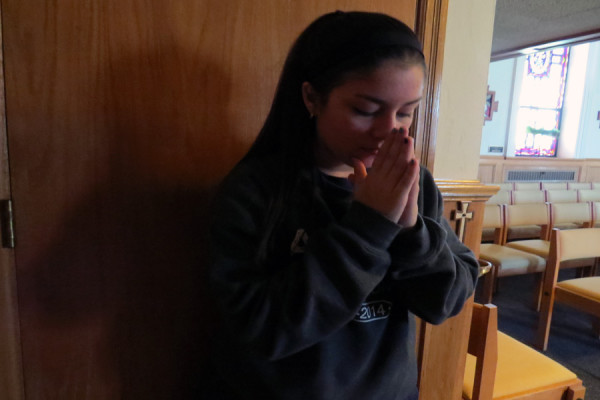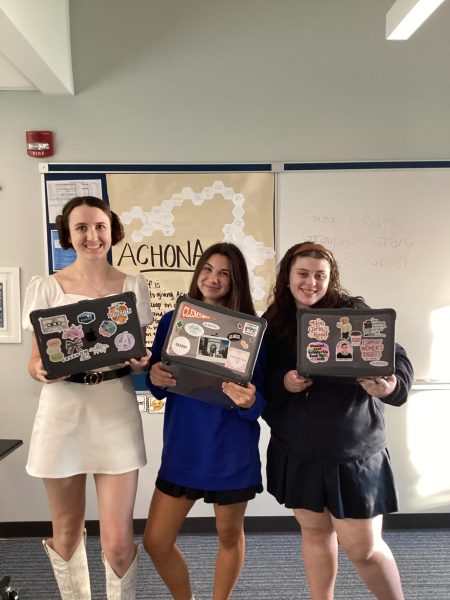Sophomores face the painful past: The Holocaust
Sophomore Alejandra Lozano taking some time to reflect on the things learned about the Holocaust.
For many, the past is something they never want to forget. For others, it is a memory they never want to relive. This is the case for those who witnessed what is one of the largest mass killings in history, the Holocaust. The goal of the “Final Solution” was to rid the “racially superior” Germans of the “inferior” Jewish race. By 1945, the Germans and their associates killed about two out of every three of the European Jews.
The Florida Holocaust Museum in St.Petersburg is the site of a few, but powerful, genuine artifacts from this era. One of the biggest and most influential artifacts in the museum is the boxcar used to transport prisoners to death camps. It sits on the original tracks from the Treblinka Killing Center, which was the site of 1,000,000 executions in just twelve months. According to the museum, it serves as “a silent tribute to those who perished in the Holocaust.”
Junior Maggie Brekka, who went on the tour with Academy last year, explained it as “very eye-opening.” Brekka also explained that although she knew of the horror and death that resulted from the Holocaust before going to the museum, her perspective was greatly deepened by the visit.
“I had an even closer look at the pain of those who were thrown out of their homes and into concentration camps, and how scared they must have been. The trip was heartbreaking but also eye-opening.”
The Class of 2016 sophomores finally had their turn to visit the museum to witness first hand these stories on December 6. They were broken into groups and given a tour of the museum. The museum has three floors, and each has their own special exhibits; It takes about two hours to finish the whole walk through.
“The boxcar had a huge impact on me. I kept imaging real people being thrown in there and taken to the concentration camps. It left me understanding more about how harshly those people were treated,” exclaimed Alex Perez.
Not only did the sophomores see authentic pieces of history (that had a huge impact on America and Europe), they heard it: Survivor, Gary Silvers, was a guest speaker. When he was a teenager, he escaped from Germany to Shanghai.
Larissa Simon explained, “I really enjoyed listening to his experience and trying to picture what it must have been like. To me, this really had the biggest impact on how I viewed these times.”
The Museum itself was founded by a survivor for survivors, and one of its purposes is to speak up for those who were silenced in this terrible time.
December 6th, the torch was passed down to the class of 2016 and they experienced a riveting time in history and learned how to use their experience to make a difference so that history doesn’t repeat itself.
**Editor’s note: Due to the Museum’s photography policy, Achona was unable to take photos of this event.
About the Contributor

Jeanine Ramirez, News Editor
Jeanine Ramirez is an Academy senior, fourth-year journalist and the News Editor for the Achona. Following her interests in the social sciences, Jeanine...








